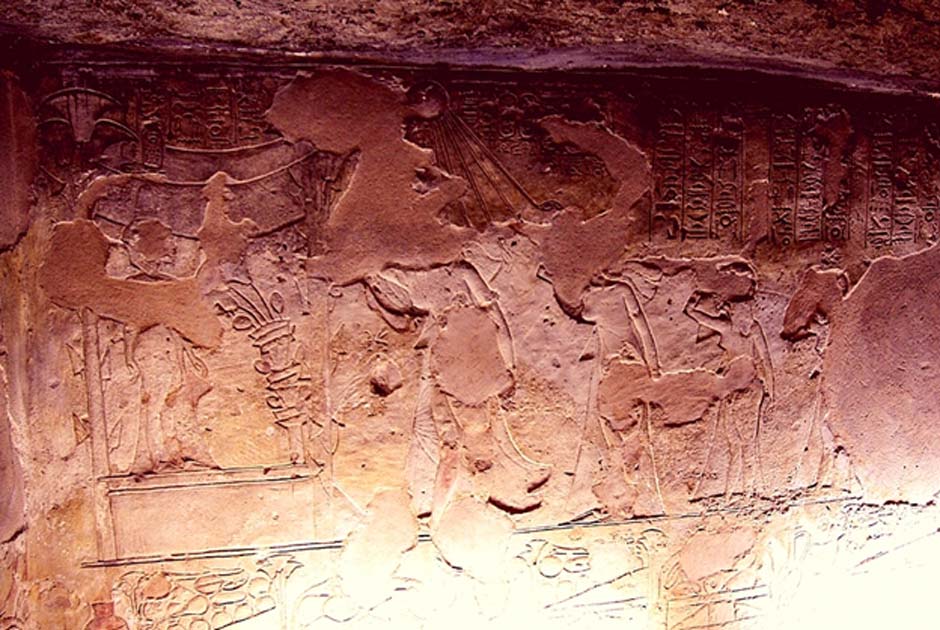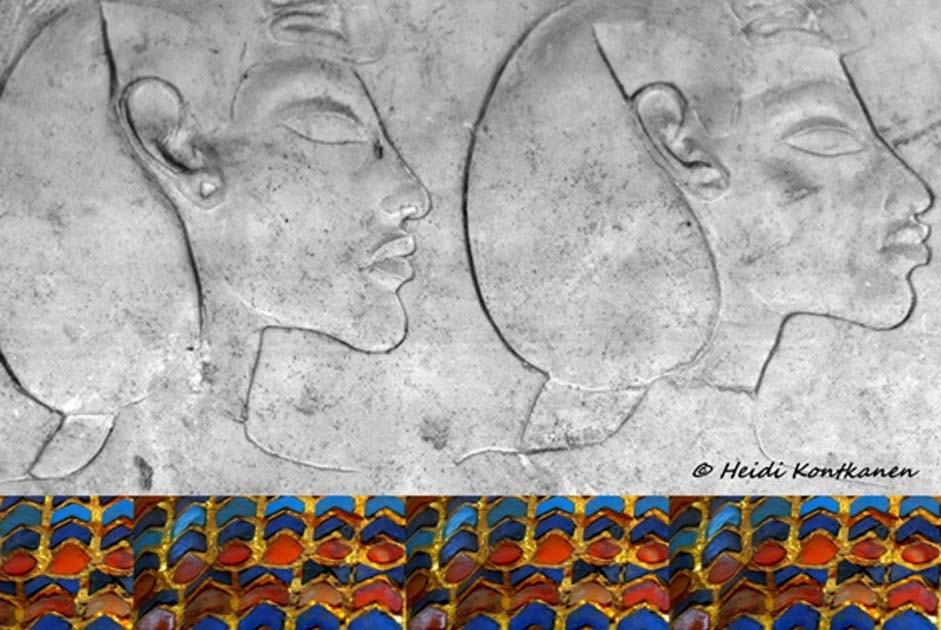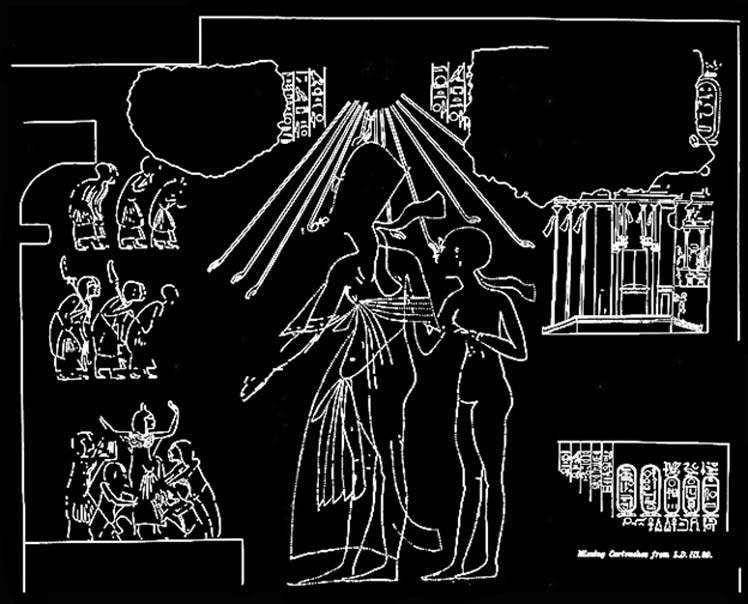
Amarna Era Chronological Conundrum: Accession of Neferneferuaten and Tutankhamun’s Death–Part II
With only an Amarna wine jar label from Regnal Year 17 – purported to be the last dated inscription from his reign – that makes no mention of Akhenaten by name, and the generous 59 years’ rule bequeathed to Horemheb by the appreciative Ramesside kings; have Egyptologists been all along miscalculating the true number of years the erstwhile Generalissimo was Pharaoh?

A sculptor's limestone trial piece with sunk-relief depictions of (some believe) two Amarna Kings - Akhenaten and Smenkhkare. This could also be a double portrait of Akhenaten alone. The border below comprises surface decoration from the Tomb 55 coffin. Egyptian Museum, Cairo.
‘Effective For Her Husband’
The famous Year 12 Durbar scene in the tomb of Meryre II in Amarna is our last glimpse of the entire royal family. Joining in the celebrations are Akhenaten and Nefertiti along with their six daughters, Meritaten, Meketaten, Ankhesenpaaten, Neferneferuaten Jr., Neferneferure, and Setepenre.
“The scene provides the last securely dated appearance of all seven women, as well as the first dated attestation of the later name of the Aten. Between this point and the accession of Tutankhamun, the events of Amarna history are much less lucid,” explains Dr James P. Allen. Leading Amarna expert, Dr Aidan Dodson believes that there was at least one male king who ruled in the interregnum between Akhenaten’s death and Tutankhamun’s accession. He bases this on the fact that a number of nineteenth-century travelers recorded a pair of cartouches accompanying a scene in the Tomb of Meryre II (TA2) at Amarna.

Line drawing of two figures from the tomb of Meryre II (TA4), Tell el-Amarna. Lepsius’ drawing of the now missing cartouches identify the figures as Ankhkheperure Smenkhare Djser Kheperu and his wife Meritaten. (Public Domain)
Revealing details from his studies, Dr Dodson writes, “In 1998, French Egyptologist Marc Gabolde pointed out that a number of cartouches of Neferneferuaten that had been read as using the epithet “Mery-Akhenaten” actually bore the epithet “akhet-en-hi-es” —“effective for her husband.” The correctness of these readings by Gabolde was confirmed beyond any doubt by exhaustive reassessments of the palimpsest inscriptions inside the canopic coffinettes ultimately used for Tutankhamen, which had long been known to have been usurped from Neferneferuaten: wherever the epithet could be detected, it was indeed “akhet-en-hi-es”.
- The Abydos King List is a trove of information, preserving the identities of 76 kings of ancient Egypt
- To Open or Not to Open The 1,650-Year-Old Speyer Wine Bottle?
- WATCH: Akhenaten, the Heretic Pharaoh: A Different View, with Ted Loukes
- Objects of Wonder: The Symbolism and Suspense behind Ancient Egyptian artifacts
Concurring with this point of view, Dr Nicholas Reeves proposes that as co-regent, Nefertiti adopted a kingly name: Ankh(et)kheprure Neferneferuaten, who bore the epithet “beneficial for her spouse”. And when Akhenaten died she succeeded as independent pharaoh, her name now changed to Ankhkheperure Neferneferuaten Smenkhkare-Djeser-Kheperu. Some Egyptologists postulate that Nefertiti had made Meritaten the ‘Great Royal Wife’, just as Pharaoh Hatshepsut had similarly elevated her own daughter, Neferure.





